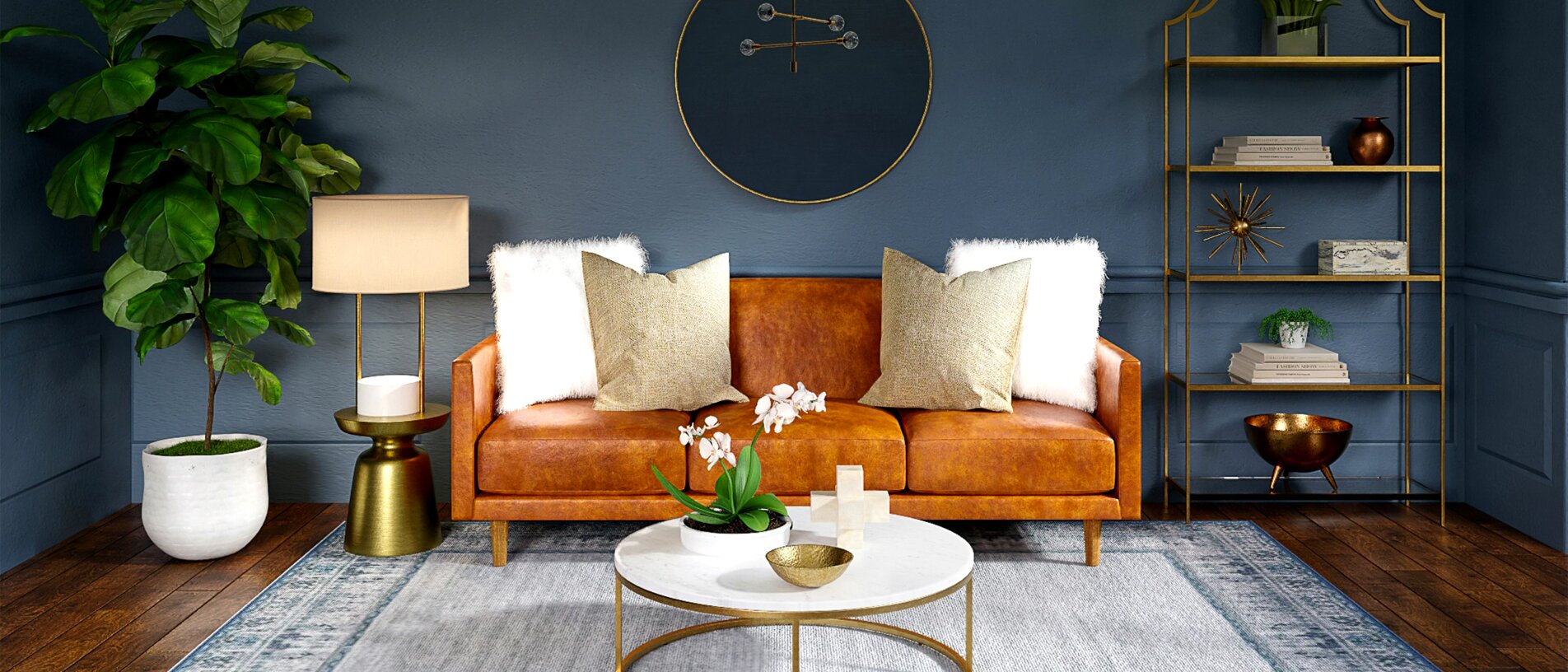You're on the list
By signing up, you agree to receive email marketing.

Mixed materials can describe anything from a contemporary lamp crafted of marble and brass to a wood coffee table with slate tiles and iron legs. Mixing materials refers to the way you pull together an individual collection of furnishings with different materials and finishes that complement rather than match each other. Combining unique materials and mixing colors adds vibrancy and character to your space, making your home uniquely yours.
People often use "materials" and "finishes" interchangeably, but these terms refer to different aspects of furniture and decor.
Materials are the natural or synthetic substances used to construct furnishings. They're the foundation that gives each piece its structure and character. For example, leather furniture feels smooth and develops a beautiful patina with age.
Popular materials include brick, fabric, glass, leather, metal, stone, wood.
By contrast, finishes are the elements applied to the surface of materials. These substances help protect items from corrosion, moisture, scratches, stains, and other hazards. They also add color and texture.
Common finishes include metal, paint, shellac, stain, tile, and varnish.
Select a color palette that fits the overall atmosphere you want to create. This approach will help you create a cohesive look and allow you to explore different materials and patterns.
Follow the 60-30-10 rule when selecting a color palette. Aim for this ratio of colors in each room:
60%: A dominant color that covers the majority of the space
30%: A secondary color that complements the first
10%: An accent shade that adds small bursts of color to the room
For instance, you choose black as your dominant color. Brighten the space by choosing light gray or ivory as the secondary color. Finally, pick a vibrant accent color like red or emerald for visual contrast.
Every color has contrasting shades that balance them out and create visual interest. You can use contrast colors to highlight focal points in a room or create a specific mood.
Complementary colors are on opposite sides of the color wheel. Here are a few examples of contrast colors:
Black and white
Mint green and pink
Purple and yellow
Red and green
Silver and lavender
Teal and coral
Mix and match colors and patterns for an eclectic yet harmonious look. For example, add black and white striped throw pillows to a sleek black leather couch. You could also combine patterned upholstered armchairs with solid wood end tables.
Create a few areas of visual interest to capture attention and guide people through your space. Pick items that combine different materials and finishes for the most impact.
Here are a few potential focal pieces for different rooms:
Bedroom: Combine a tufted fabric headboard with a metal and wood bed frame for a unique centerpiece.
Dining room: Fuse industrial and rustic design styles by choosing a wooden table with iron legs and chairs.
Office: Pair an upholstered office chair with a metal and wood desk for a stylish workspace.
Layer textures by mixing different finishes and materials. This process will add depth and tactile contrast to your space.
For example, you can place a colorful fabric rug under a dark leather sofa for contrasting warmth and coolness. You could also choose a wooden coffee table with a glass top and metal accents for an eye-catching focal point.
Here are a few other examples of ways to add texture:
Decorate your walls with abstract artwork and soft tapestries.
Fill a smooth ceramic vase with flowers and place it on a grainy wooden dining table or end table.
Layer your sofa with throw pillows made from different fabrics, such as faux fur and satin.
Lean a polished glass mirror against a textured brick or stucco wall.
Pick a handful of textures to avoid creating a confusing or overpowering tactical experience.
There are a limitless number of ways to mix materials and finishes. Here are a few popular combinations for inspiration.
Mixing finishes and materials offers plenty of creative freedom, but here are two common issues to avoid.
Too many materials and finishes can make a room feel chaotic or disorganized. Limit yourself to a few options to create a harmonious and soothing space.
Incorporating new furniture and decor can throw off your color palette if you're not careful. For consistency, stick to the 60-30-10 ratio.
Add various finishes and materials to your design to engage more of your senses. Experiment with different colors, patterns, and textures to create a unique space. Get started by exploring different design styles and picking elements that fit your taste.
You're on the list
By signing up, you agree to receive email marketing.